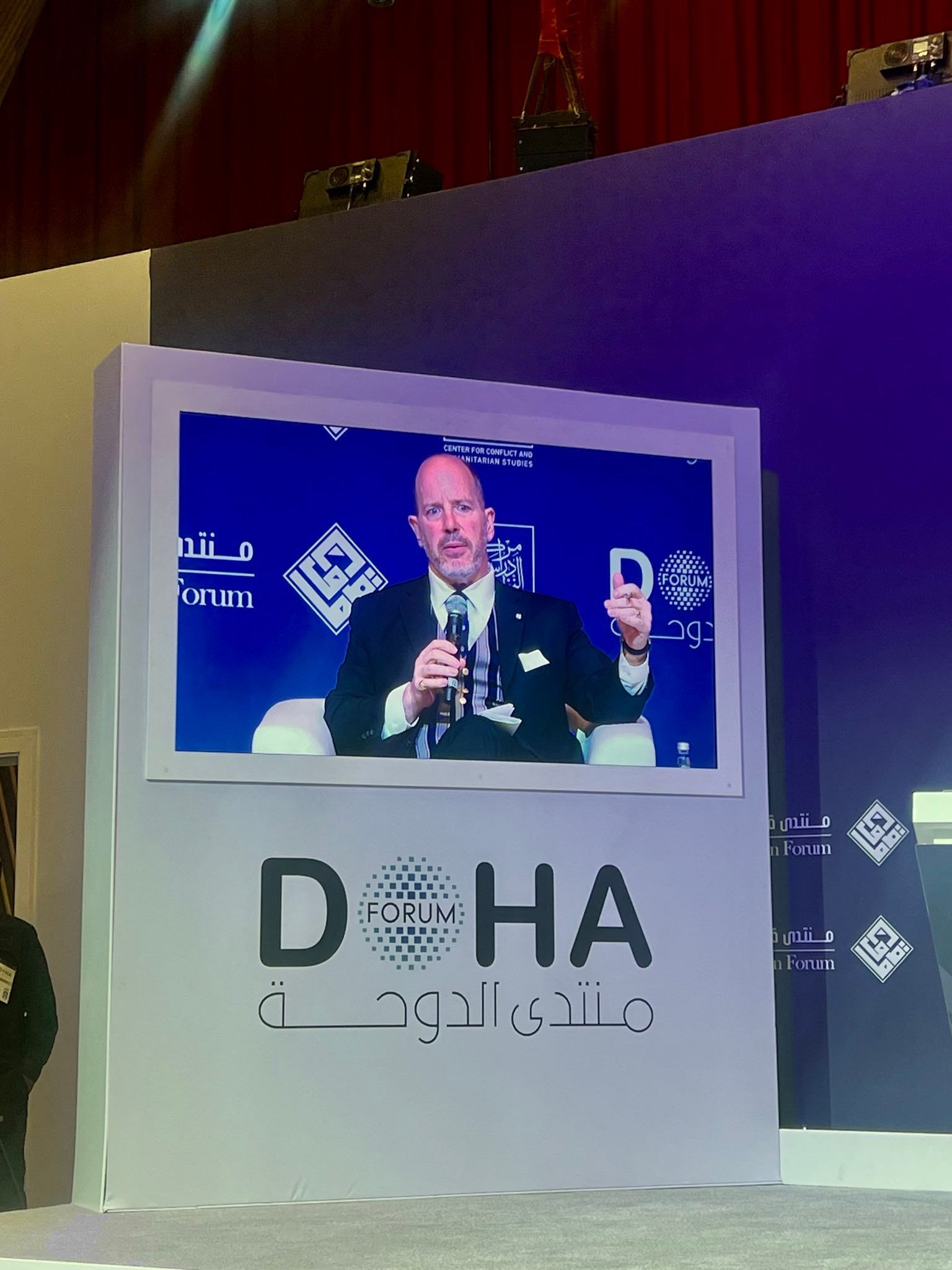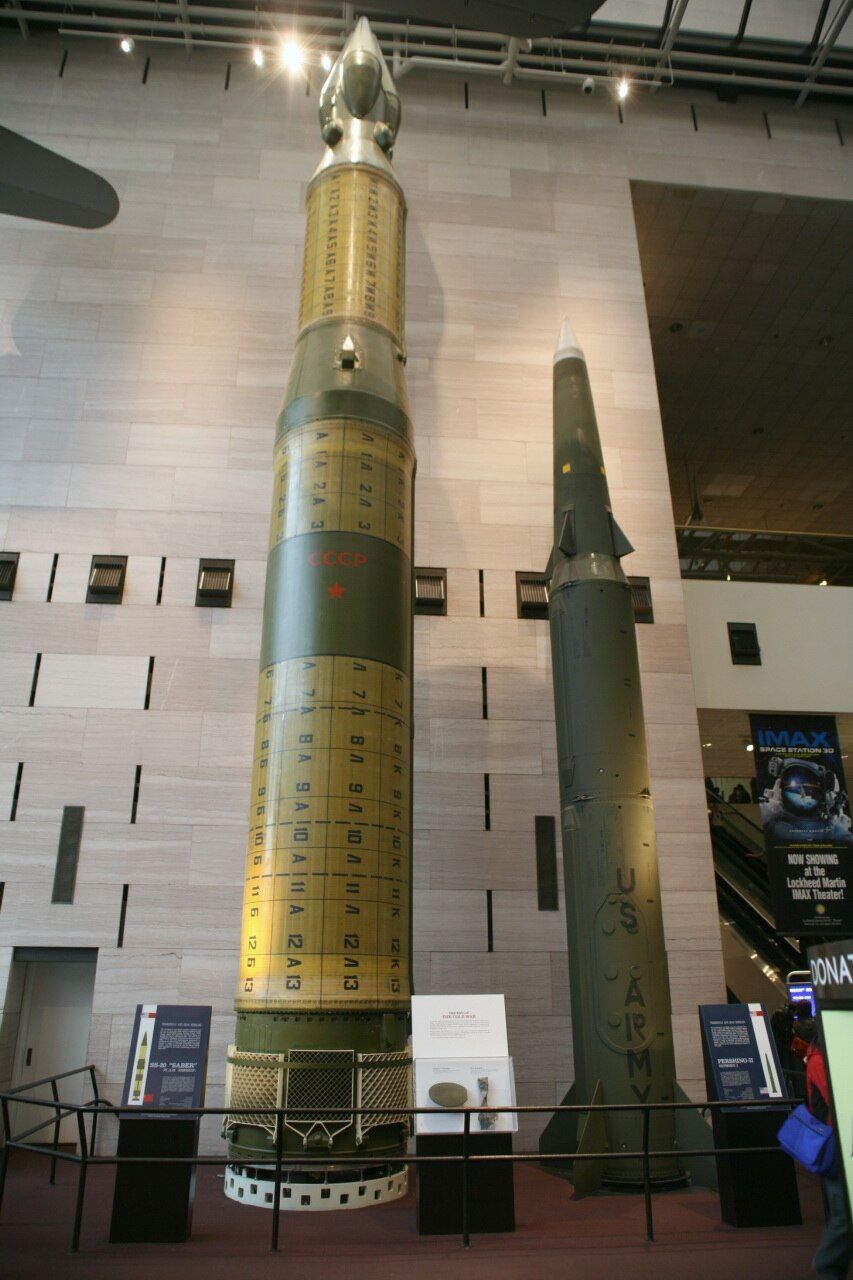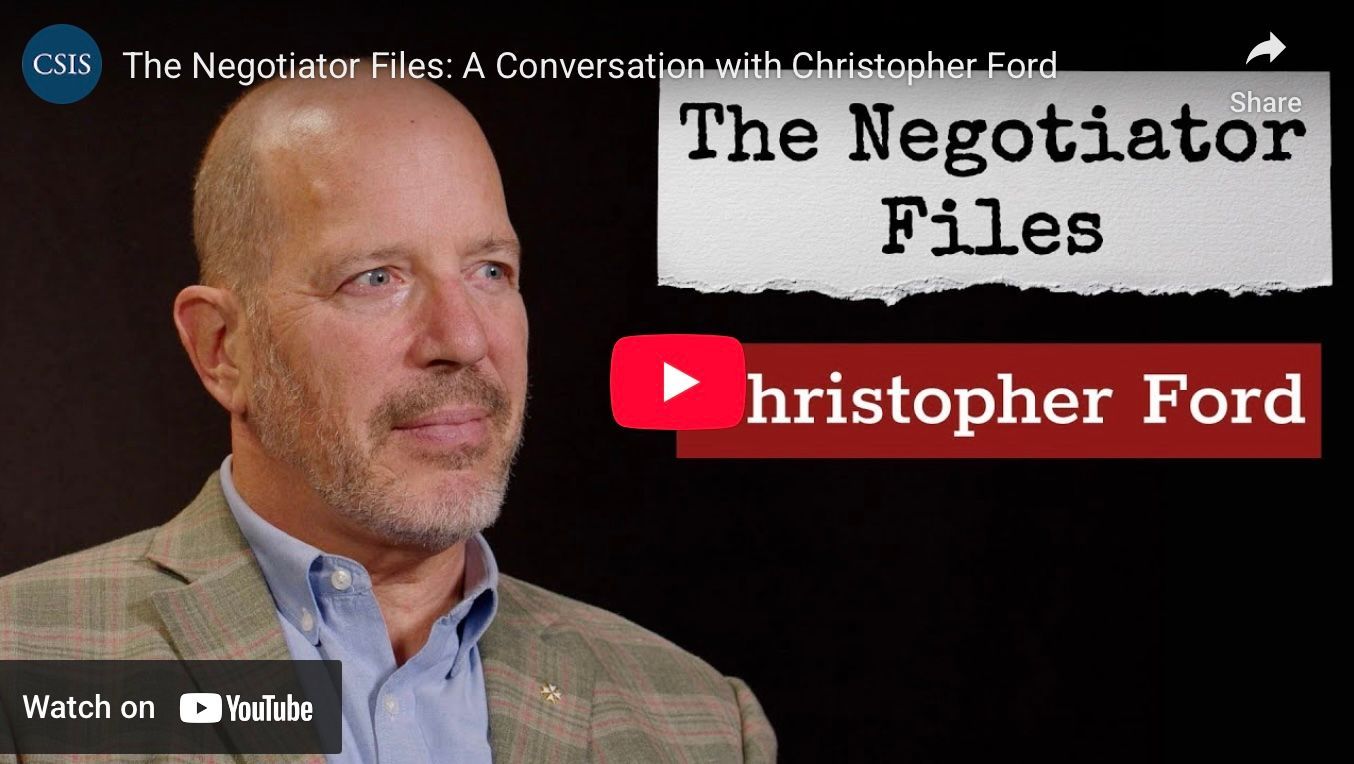Speaking Candidly about Nonproliferation and Disarmament
Note:
This document, Ford's presentation to the 2009 NPT Preparatory Committee meeting on May 5, 2009, is also available through the Reaching Critical Will website.
I am grateful for the chance to speak at a meeting of the Treaty on the Non-Proliferation of Nuclear Weapons (NPT), for the first time as a private citizen. As a member of civil society and someone whose job it is to care about these issues, I will try to speak candidly, for time is short, there are many points to be made. I suspect that few of the inconvenient truths I wish to point out will pass the lips of anyone else in this hall, whether they are from a non-governmental organization (NGO) or a national delegation. The fact that they are little discussed, however, does not make them untrue – and in fact makes efforts to deal openly and forthrightly with their truth all that much more necessary.
Nonproliferation
Let me begin with nonproliferation, for nonproliferation compliance is vital to international peace and security. Nonproliferation is the foundation of the NPT, and is furthermore the sine qua non ingredient without which nuclear disarmament will remain a utopian dream. But let me speak frankly: the international community seems to be losing the struggle against nuclear weapons proliferation.
It is six and a half years since Iran’s secret uranium enrichment and plutonium reprocessing program was revealed to the world, more than six since North Korea withdrew from the NPT, three since the International Atomic Energy Agency (IAEA) finally got around to referring Iran’s noncompliance to the U.N. Security Council, and two and a half since North Korea’s nuclear test. Yet the nuclear weapons programs of those countries continue unchecked. The Libyan and Iraqi weapons of mass destruction (WMD) programs thankfully no longer exist, but the nonproliferation regime cannot afford to halt proliferation only half of the time. Unfortunately, to judge by the last four events in the NPT review cycle, many delegations apparently consider it bad manners to ask – at meetings of a nonproliferation treaty, of all things – that States Party focus more than anything else upon nonproliferation. This bodes ill for the regime’s ability to turn things around.
Even while such nonproliferation noncompliance remains unaddressed, increasing concerns are being raised about the ability of the safeguards system to provide timely warning of diversion or detect undeclared activities. Many countries still resist the Additional Protocol (AP), and the IAEA has acknowledged that even the AP is inadequate if a country is determined to cheat. Yet still the opinion persists that there is a “right” under the NPT to capabilities, such as uranium enrichment and plutonium reprocessing, that safeguards may not be able adequately to handle, especially if such capabilities become more widely spread. In my own country, the Acheson-Lilienthal Report argued years ago that it was impossible to sustain nonproliferation in a system of widespread national nuclear capabilities safeguarded by mere inspection mechanisms. It will be to our shame – and the world’s peril – if we allow the authors of the Acheson-Lilienthal Report to have the last laugh at our expense, by permitting the further spread of technologies that are difficult or actually impossible to safeguard against misuse.
Challenges of Disarmament
Turning to disarmament, let me say first that achieving and sustaining it requires vigorous enforcement of nonproliferation requirements and strong policies to reduce technology-derived proliferation risks.
A system in which non-weapons states cannot be prevented from developing nuclear weapons is a system in which existing possessors will be quite unlikely to give up the ones they have. Moreover, as long as non-possessors are indiscriminately permitted to acquire fissile material production capabilities that allow them to hover on the edge of nuclear weapons capability, it will be doubly hard to convince anyone that proliferation can be prevented – and that disarmament could last.
Many advocates of disarmament seem to dislike talking about how one might actually create a global security environment in which nuclear weapons possessors might believe it consistent with their security interests to agree to disarmament. Last year, for instance, a group of disarmament advocates was quoted as arguing that it was “premature” to worry about how to sustain a “nuclear zero” regime. This is foolish and counterproductive thinking.
But today’s weapons possessors clearly do not believe we are yet in a world where it is consistent with their security interests to be at “zero.” That’s why disarmament advocates, if they are serious, must be able to speak – and not scorn – the discourse of national security and of both nuclear and non-nuclear deterrence. It is in no way “premature” to have to answer tough questions about the future world you wish to persuade someone else to accept today, and it is foolish to expect him to accept it until you can.
Living in a Transitional World
One such tough question has to do with how to manage the world between today and abolition. In most of the nuclear weapons states, nuclear weapons reductions seem to be continuing. The United States and Russia are already on their way down to between 1,700 and 2,200 operationally deployed strategic warheads, and there is now talk of perhaps going as low as 1,500 or even 1,000 warheads pursuant to a successor agreement to the Strategic Arms Reduction Treaty (START).
What is little discussed, however, is that continuing reductions – adopted, for the sake of argument, as transitional steps toward “zero” – would create a world of very different deterrent relationships between nuclear weapons possessors. But we do not really know what these relations would actually be like. The world has some experience, however risky and uneasy, with strategic nuclear deterrence. And it has considerable experience – in the more distant past, both in Europe and in various periods of Chinese history – with multi-player relationships among a cluster of Great Powers. But the world has no experience of multi-player “near-peer” nuclear deterrence relationships – that is, with a not-too-far-distant world of at least eight nuclear weapons possessors all of whom are, in strategic nuclear terms, equals. Because it will be necessary to keep the peace in such a transitional world, whatever its duration, both the disarmament community and governmental security establishments have an interest in thinking through what multi-player peer deterrence would actually be like.
Nuclear Weapons Technology
Because it is impossible to predict just how long the transitional period would be between today’s world and a future world of abolition, it is also an urgent task for disarmament advocates to support nuclear weapons-possessors’ efforts to be confident that their nuclear deterrent will be viable and reliable during this transition, especially as arsenals shrink in size. Countries that cannot be confident of whatever reliability they feel they need will necessarily have to maintain larger and more redundant stockpiles than would otherwise be the case. Until the security situation is felt to make abolition possible, it thus serves the cause of disarmament to support programs to ensure that whatever weapons remain in existence are reliable and equipped with state-of-the-art safety mechanisms.
The “Catch-22” of Non-Nuclear Strength
Speaking of how to maintain global security in a disarming world and sustain it in a disarmed one, it is worth noting a “Catch-22” situation that bedevils nuclear disarmament discussions. One of the factors that has made the United States as willing as it has been to continue reductions and to speak approvingly of the eventual goal of abolition is its non -nuclear military prowess, which helps it meet perceived security needs without nuclear weapons. In this sense, American non-nuclear military might has been a powerful facilitator of disarmament – not merely for Washington itself, but probably also for Britain and France, which rely to some extent not merely upon U.S. extended nuclear deterrence but also upon the vast conventional military power that underpins the American commitment to European security.
Yet it is this same non-nuclear military power that surely makes it much harder for Moscow and Beijing to contemplate abolition. Russia remains fiercely attached to its nuclear weapons, and is apparently both modernizing its delivery systems and developing new warhead types. It may be doing this for many reasons, but one of them is surely that through the zero-sum Cold War-tinged lens with which its government views contemporary geopolitics, nuclear disarmament would leave Russia a second- or third-rate power, and the Americans militarily supreme.
China also does not seem genuinely interested in “zero,” notwithstanding its rhetorical protestations to the contrary. As evidenced by its ongoing build-up and strategic modernization – making it the sole NPT nuclear weapons state to be bucking the disarmament trend by increasing the size of its arsenal – China thinks its security environment requires more, not fewer nuclear weapons and modern delivery systems. Here lies the Catch-22: what makes key Western players more willing to disarm helps make others less so, and what would at least somewhat assuage the concerns of a Russia or China (hobbling the America’s non-nuclear capabilities) would make disarmament more difficult on both sides of the Atlantic. No one has yet articulated a good way of managing this tension, but until this conundrum can somehow be resolved, “zero” seems impossible.
Disarmament and Alliance Reassurances
While on the subject of states’ security perceptions in an asymmetric and insecure world, let me add that advocates of disarmament must necessarily concern themselves with the challenges of military alliance management. In a world in which technologically sophisticated, nuclear-knowledgeable, and affluent countries such as Japan, South Korea, Taiwan, and perhaps some European states still feel it necessary to have a security alliance relationship with the United States, achieving further reductions in nuclear arsenals may require shoring up the non-nuclear aspects of these security ties. It would be self-defeating for the cause of disarmament if U.S. weapons reductions – and indeed the eventual evaporation of the so-called “nuclear umbrella” – worsened instability and drove erstwhile American allies into nuclear weapons development.
Some have made this point in order to argue against the cause of disarmament. I make it here for a different reason: to point out that anyone serious about disarmament must also be willing to be serious about bolstering the non -nuclear aspects of alliance relationships that today depend in part upon nuclear deterrence. Ideally, it would be possible to remove the basic causes of insecurity that lead countries to desire alliance relationships in the first place. Unless we are willing to postpone progress toward disarmament until that occurs, however, we must not forget to replace with non-nuclear reassurance what nuclear disarmament takes away from extended deterrence. In the short term, at least, nuclear disarmament thus requires more military support for such allies.
Disarmament and Good Faith
Finally, let me say something about the issue of “good faith” in seeking disarmament. However one approaches the specific question of what the NPT’s Article VI does (or does not) require in terms of specific steps – and indeed, whatever one’s views on the merits or demerits of disarmament itself – all should be able to agree on: (1) the need for good faith in approaching disarmament issues; (2) the importance of working for a more stable and more peaceful world; and (3) the need both to seek and to achieve any disarmament measures that such peace and stability require.
The key point about good faith, however, is that it does not necessarily dictate substantive homogeneity. One wouldn’t need (or want) to use phrasing such as “good faith” if what were intended was for everyone to proceed in lockstep along a predetermined path. (Legislatures, for instance, do not pass laws asking citizens to pay their taxes “in good faith.” They simply require payment.) The point of “good faith” phrasing is to allow for the possibility of behavioral variation , provided that all participants are pursuing the same ultimate goal in whatever way they feel best serves it.
Through this prism, I think it may well be possible for persons with very different views about specific disarmament-related policies to agree to evaluate the policies of all NPT States Party for disarmament good faith according to whether such countries appear to be genuinely seeking to:
• Reduce the risk of nuclear warfare;
• Reduce their (direct or indirect) reliance upon nuclear weapons;
• Reduce nuclear arsenals as much as possible consistent with peace and security while (a) keeping the peace between weapons-possessors as numbers shrink, (b) keeping new countries out of the nuclear weapons business, and (c) creating conditions to make “as much as possible” come to mean “zero” as quickly as can be arranged consistent with the maintenance of this same peace and security; and
• Create conditions in which “zero” can be sustained, and peace kept between the major powers, indefinitely.
-- Christopher Ford









